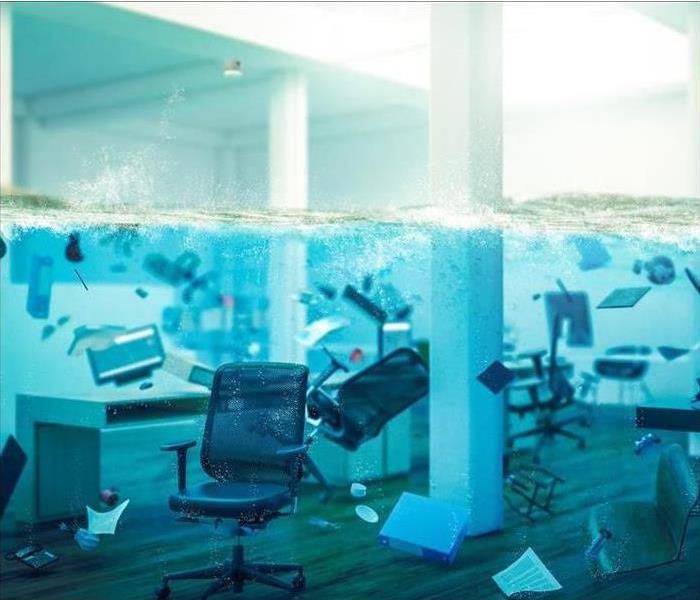The Flood Water Cleanup Process
9/13/2023 (Permalink)
Excess water can cause a lot of damage to your commercial building in West Valley City, UT, and these issues can only be properly mitigated by certified water restoration experts. When the flood water in question is contaminated, this adds extra steps to the cleanup process. It's important to understand the measures necessary to ensure that your building is free of both moisture and bacteria.
Steps for Cleanup After Flooding or Toilet Overflow
A simple pipe break can be a big problem, but at least the water it releases is clean. By contrast, Category 3 water is contaminated. It can come from a variety of sources:
- Overflowing toilet
- Groundwater seepage
- Storm damage
- Municipal sewer backup
Any time your building is flooded with Category 3 water, mitigation automatically includes measures to ensure that no contamination gets left behind.
- Extract Excess Water
Removing water is a crucial step that prevents it from causing further damage. Technicians pump it out of the building. Then they use special equipment to get rid of whatever the pump couldn't extract. They must assess which items and parts of the structure are salvageable before they can continue with remediation.
- Remove Debris
Any debris that enters your building along with the flood water must also be removed. Additionally, all porous materials that are saturated with contaminated water need to be torn out. This inevitably includes carpet and insulation, but it may also mean that drywall, floor pads and ceiling tiles have to go. Technicians have to clear the area of all ruined items.
- Rinse Area
No matter how meticulous the mitigation team is, some debris will not be able to be removed manually. The only way to get it off the remaining surfaces in your building is to rinse it. The purpose of the initial rinse is to remove all remaining particles that don't belong in the space.
- Sanitize Surfaces
Once all the dirt and particles that you can see have been washed away, it's time to disinfect the remaining surfaces. Technicians use industrial-strength cleaners to ensure that all bacteria and microbes are killed in the cleaning process. For spaces that are hard to reach, they may need to use equipment that helps them get the detergent into nooks and crannies.
- Dry Thoroughly
There is often residual moisture left by the cleaning process. To prevent secondary damage such as mold, your building needs to be dry. Fans are useful not only for drying surfaces but also for bringing the humidity level back under control.
- Conduct Tests
The final step before the restoration phase begins is confirmation that the space has been sanitized. Technicians may perform a variety of tests, including surface swabs and air quality measures, to make sure that their efforts to disinfect the building were successful. If the results are not satisfactory, they know they have more cleaning to do before moving on to rebuilding.
Cleaning up after flood water is always a multi-step process. When the damage is caused by Category 3 water, however, even more tasks must be added to mitigate it completely.





 24/7 Emergency Service
24/7 Emergency Service
